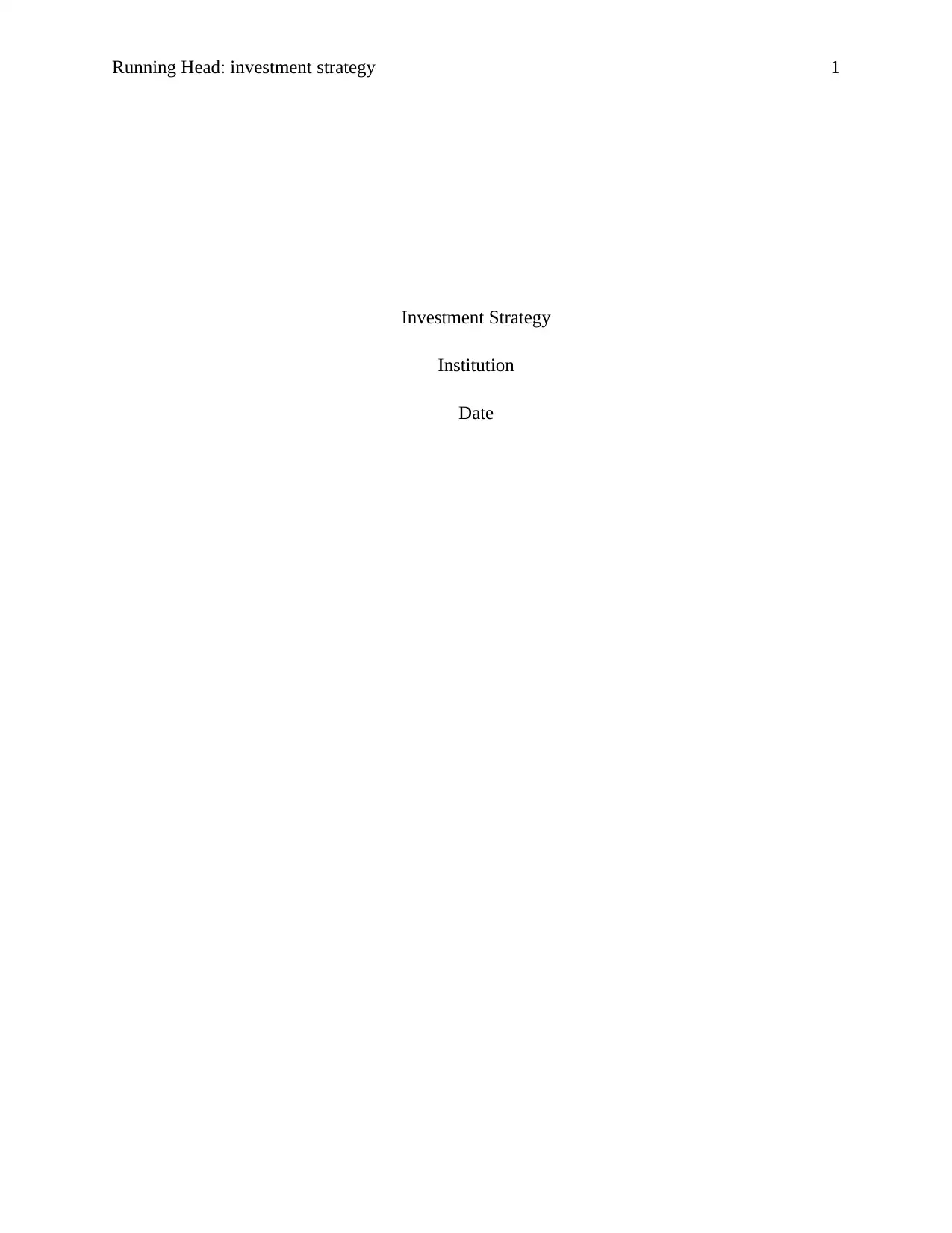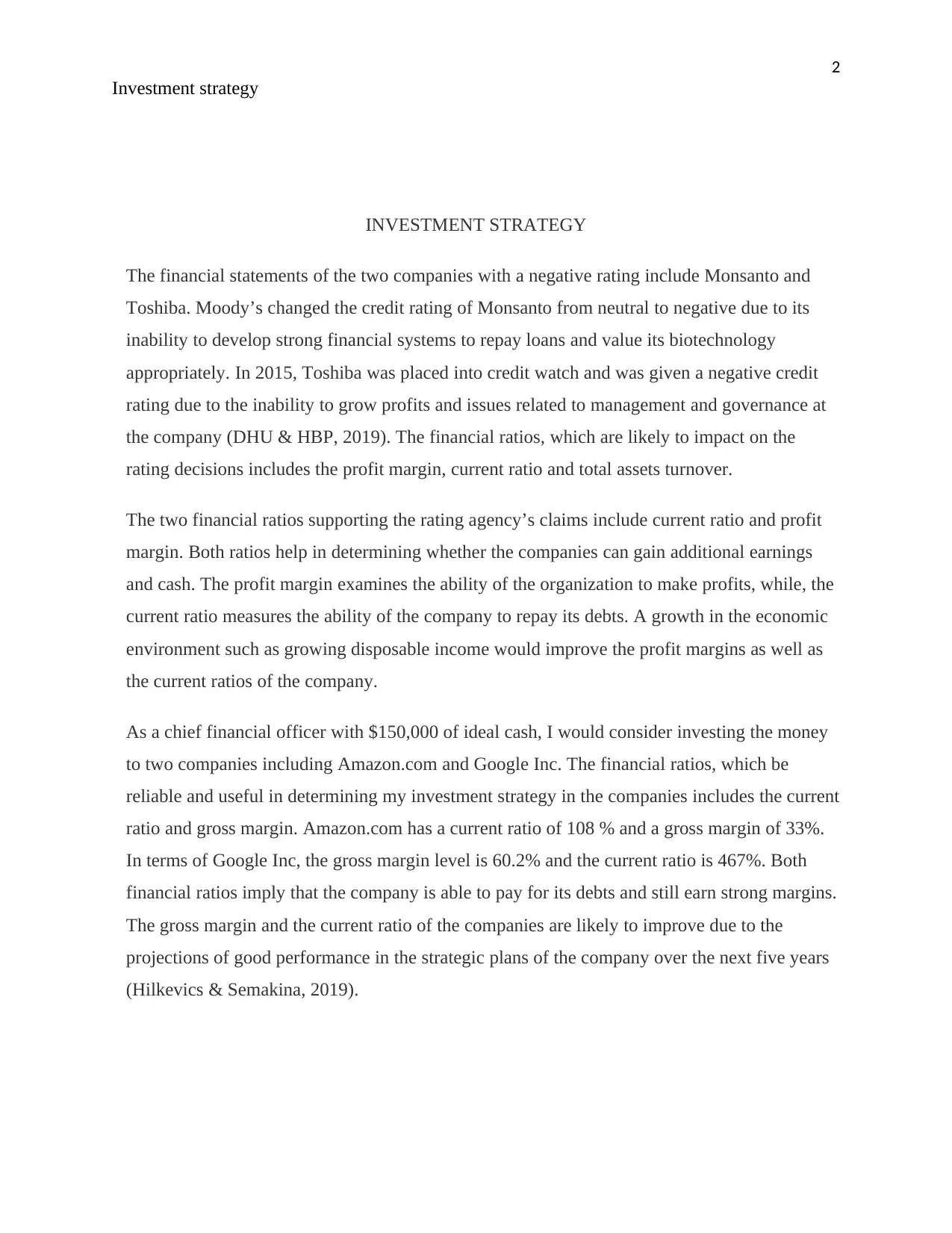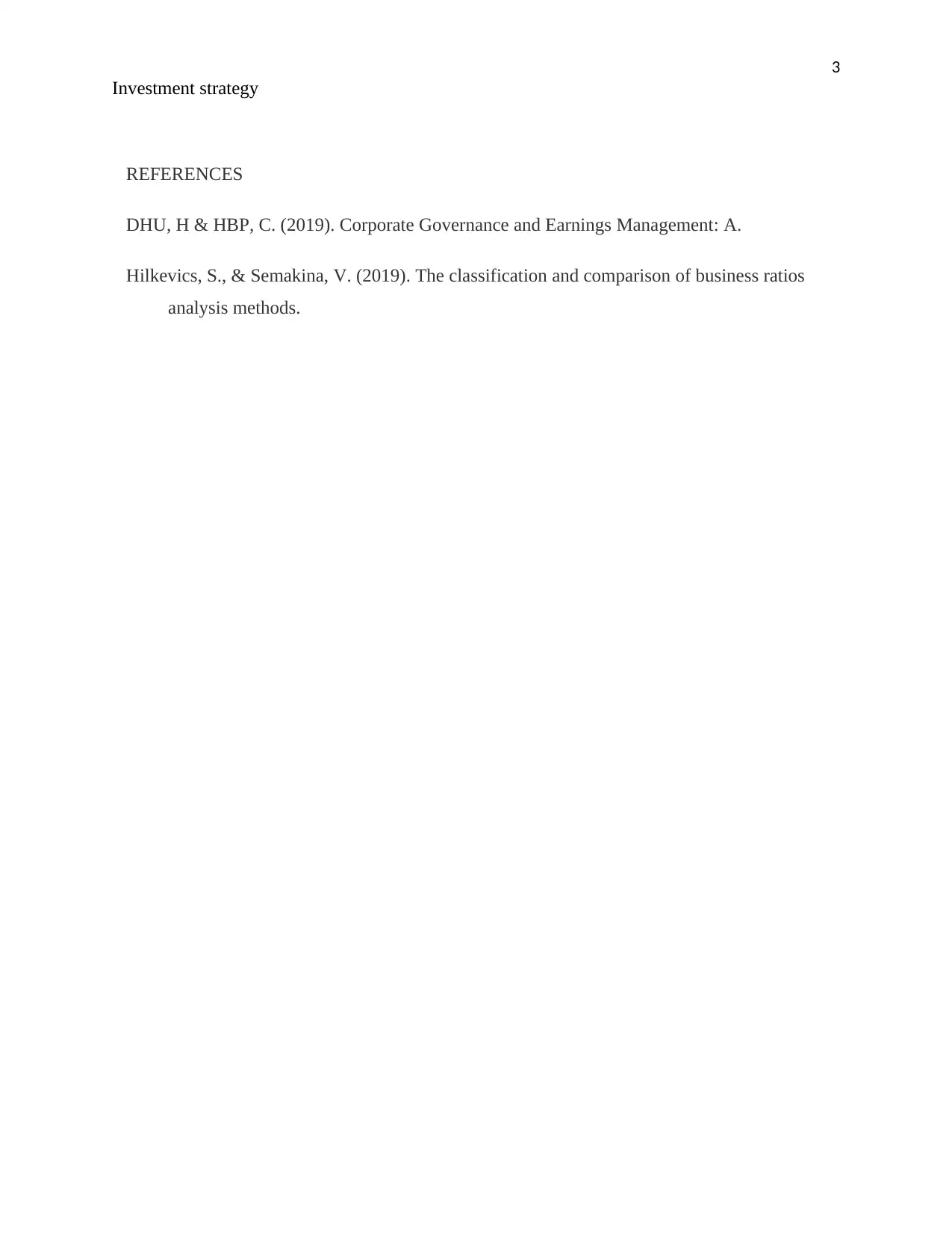Investment Strategy: Financial Ratio Analysis and Investment Decisions
VerifiedAdded on 2022/10/01
|3
|407
|15
Report
AI Summary
This report analyzes investment strategies by examining financial ratios of various companies. The financial statements of Monsanto and Toshiba were evaluated, and the impact of financial ratios such as profit margin, current ratio, and total assets turnover on their credit ratings was discussed. The report also considers the impact of a growing economic environment on these ratios. Furthermore, it proposes an investment strategy for a CFO with $150,000, focusing on Amazon.com and Google Inc. The report highlights the importance of current ratios and gross margins in making investment decisions, analyzes the financial performance of the selected companies, and discusses the potential for future growth based on strategic plans. The analysis provides insights into how financial ratios can inform investment choices.
1 out of 3









![[object Object]](/_next/static/media/star-bottom.7253800d.svg)